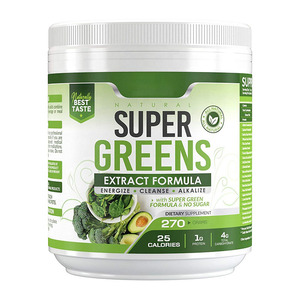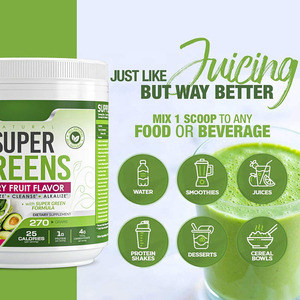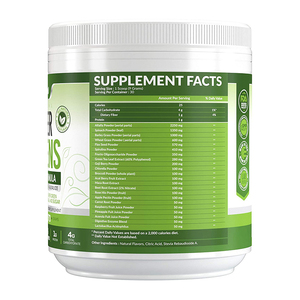
All categories
Featured selections
Trade Assurance
Buyer Central
Help Center
Get the app
Become a supplier

(2960 products available)






































Walnut juice refers to a beverage extracted from the meat of walnuts. It comes in different types, such as pure, flavored, and concentrated walnut juice, which can also be categorized into various compositions and preparations. They include:
Pure walnut juice
This is the original form of walnut juice whereby the nuts are blended to produce a thick liquid, which is later strained to provide walnut extract. Often pale in color, it has a buttery and nutty flavor alongside a creamy texture that is almost similar to the original nut but without the heaviness. It contains the full nutritional value of walnuts, thus making it rich in omega-3 fatty acids, antioxidants, and vitamins.
Flavored walnut juice
This type of juice includes additives and flavorings for taste improvement. These could include vanilla, cacao, fruit extracts, or natural sweeteners. Such variations help create a more exciting flavor profile for buyers who might not love the original taste. While flavored juices might contain extra sugars or calories depending on the type of flavoring used, they could be helpful in widening the market base.
Concentrated walnut juice
As the name suggests, this type is made from concentrated extracts, which are then diluted with water before consumption. It saves the essence and results in a more potent flavor, meaning just a small amount will be enough to retain the classic taste. Sometimes offered in syrupy or powdered forms, concentrated juices tend to have a longer tolerance life and are easier to ship, thus being ideal for wholesale markets.
Sugar-added walnut juice
More often than not, people add sweeteners like honey, sugar, or agave syrup to elevate the extract’s taste. It makes the juice more palatable, especially to those who do not normally enjoy the natural nutty bitterness. This juice type can be highly marketable to the more demographic group and the sales of walnut-based drinks that require sweetness for better taste.
Sugar-free walnut juice
Although some people love walnut juice with added sugar, others prefer the sugar-free version. This is because it is often dedicated to individuals adhering to strict diets, including diabetics or anyone watching their calorie intake. If sweeteners are used, they’re most likely to be non-caloric, such as stevia or erythritol. Unsweetened walnut juice retains its pure, nutty flavor and is mainly valued for its health benefits.
Walnut juice has many uses, especially when it comes to food and beverages, nutrition, dietary supplementation, and skincare and beauty products. Here are some of the common uses of this juice:
As a milk alternative
Walnut juice is gaining high popularity as a walnut milk alternative. Similar to dairy and other nut milks, it is a creamy and plant-based liquid that people can use in coffee, tea, smoothies, or cereal and baking recipes. Because of its strong and distinct flavor, walnut milk can be better than other nut milks in recipes that require a powerful taste, such as chocolate desserts. Moreover, with its natural richness in omega-3 fatty acids, it is a nutritious option for vegans, lactose-intolerant individuals, or health-conscious people.
As a nutritional supplement
Walnut juice is highly prized because it is packed with omega-3 fatty acids, antioxidants, and other valuable nutrients. Thus, people frequently consume it as a supplement for cardiovascular health because it promotes brain health and reduces inflammation. Buyers often mix the juice with other supplements or offer it in capsules to make ingestion easier and improve buyers' general health and wellbeing.
In Culinary Applications
Walnut milk is similar to dairy and other nut milks, a creamy, plant-based liquid they can use in coffee, tea, smoothies, or cereal and baking recipes. Because of its rich, distinctive flavor, walnut juice can be better than other nut milks in recipes that require powerful taste, such as chocolate desserts. Also, with its natural richness in omega-3 fatty acids, it is a nutritious option for vegans, lactose-intolerant individuals, or health-conscious people.
In beauty and skincare products
Walnut juice is common in beauty products because it contains antioxidants, which protect and nourish the skin. It is added to creams, lotions, or serums for its natural properties as a moisturizer that helps hydrate, rejuvenate, and provide nutrients to the skin. Also, manufacturers use walnut juice to develop hair care products intended for healthy hair, such as conditioning masks and shampoos.
As a natural detoxifier
Walnut juice is considered a natural detoxifier that helps eliminate toxins from the body because of its antioxidant properties and high fluid content. This is good for overall health and keeps the liver and kidneys working well. It also improves the natural cleansing process in the body, thus making walnut juice a healthful beverage.
Walnut liquid has many benefits, such as nutritious and culinary uses, for skincare and beauty products. These benefits of walnut milk include:
Rich in omega-3 fatty acids
Walnuts are one of the richest nut sources of omega-3 fatty acids, particularly alpha-linolenic acid (ALA). ALA is a plant-based form of omega-3 that supports heart health by reducing bad cholesterol levels and reducing the risk of cardiovascular disease. It also keeps the brain healthy, improving cognitive function and decreasing the dangers of neurodegenerative illnesses.
High in antioxidants
Walnut juice is high in antioxidants like polyphenols and carotenoids. These work to protect the body from free radical damage and oxidative stress that leads to aging and disease. Antioxidants also protect the skin by decreasing the aging signs and keeping it healthy, glowing, and smooth.
Supports weight management
Walnut juice contains no cholesterol and is low in saturated fat. This makes it a good alternative for people who want to manage their weight. It also contains healthy fats, which increase satiety and keep one feeling full for longer, thus reducing overeating and unhealthy snacking in between meals. Also, the juice is relatively low in calories but full of nutrients so that one can enjoy it without sabotaging dietary goals.
Promotes bone health
Walnut juice has important minerals like magnesium, phosphorus, and calcium that promote bone health. These minerals are strong foundations for bone density and structure, helping maintain healthy bones while minimizing the risk of osteoporosis and fractures.
Boosts immunity
Since walnut juice is full of vitamins, especially vitamin C and vitamin E, it aids the body’s immune system. These vitamins help strengthen the immune response, thus providing protection against common diseases and infections. Furthermore, the antioxidants in the juice support the immune system and keep it functioning well.
Improves skin and hair health
Walnut juice hydrates and nourishes the skin because of its rich content in vitamins and minerals that help smooth, depurate, and rejuvenate the skin. It also helps improve hair health, thus making it shinier and stronger due to its nutrient content. This makes it also a common ingredient in natural shampoos and conditioners.
To ensure the freshness and longevity of walnut juice and its benefits, it is important to store it in the right conditions. Here are some tips to keep this juice:
Refrigeration
Walnut juice should be kept in the refrigerator if it has not been concentrated. Cold temperatures increase the shelf life by slowing down the natural decomposition process. Ideally, keep it between 1°C and 4°C for the best taste. Always put walnut juice in the refrigerator immediately after use to avoid spoilage that results from being left outside.
Use airtight containers
This juice is sensitive to oxidation, which can alter its taste, color, and nutritional value. Store walnut juice in an airtight glass or plastic container to prevent contact with air after extraction. Air-tight packaging limits juice exposure to air, keeps its freshness, and prevents spoilage. Airtight containers should also be used whenever the juice is scooped for use to avoid air contamination.
Freezing for long-term storage
Freezing is a great way to store walnut juice for a long period. Freezing extends its shelf life by slowing down the decomposition process entirely. Store juices in silicone molds or ice-cube trays so they can be portioned for later use. Keep the juice in freezer-safe containers and allow some room for expansion, as liquids expand when frozen. Consume frozen juice within 3 to 6 months for the best flavor.
Keep away from light
Because it's sensitive to light, exposure to direct sunlight or bright indoor lighting can cause juice degradation. Store juices in opaque or dark glass containers, or keep them in a dark place like a refrigerator to maintain nutrients and flavor. This preserves not only the antioxidants in the juice but also its natural flavor.
Monitor acidity levels
With longer storage, walnut juice acidity levels may rise, causing spoilage. Adding a few drops of lemon juice or vinegar can help stabilize the juice's pH level if not regularly stored in the refrigerator. Acidity inhibits the growth of bacteria and other pathogens to enhance the juice's shelf life.
A1: Normally, walnut milk is prepared from both raw and roasted walnuts. Raw walnuts offer a purer and nuttier flavor, while roasted ones provide a deeper, richer, and toasty flavor. The choice mainly depends on individual preference and the desired flavor profile of the juice. Both methods retain most of the nuts' nutrients. However, roasting may cause slight nutrient loss.
A2: Depending on how fresh the walnuts are, vanilla extract can typically last 4 to 7 days in the refrigerator. For prolonged storage, one may freeze juice in portions. It can last 3 to 6 months in the freezer while still retaining its nutritional content and flavor. After that, thaw it in the refrigerator and consume it within a few days.
A3: Walnut juice may be unsafe for people who are allergic to nuts. It is because the juice still carries proteins found in nuts that may trigger allergic reactions in sensitive individuals. Some people with nut allergies may be able to tolerate nut milks, but it is advisable to consult a healthcare expert before trying nut milk to avoid allergic reactions.
A4: Walnut juice manufacturers use several preservation techniques to enhance walnut juice's shelf life and maintain its benefits. One of the key methods involves pasteurization, a process that applies mild heat to kill bacteria and microorganisms that cause the juice to spoil. This method is common in concentrated and commercially packaged juices. Also, juice is often bottled and stored in airtight containers to reduce exposure to air, which causes oxidation. Using preservatives like citric acid helps lower the juice's pH, inhibiting bacterial growth.
A5: Although walnut milk has a lower protein content than cow and soy milk, it still has a modest amount of protein.